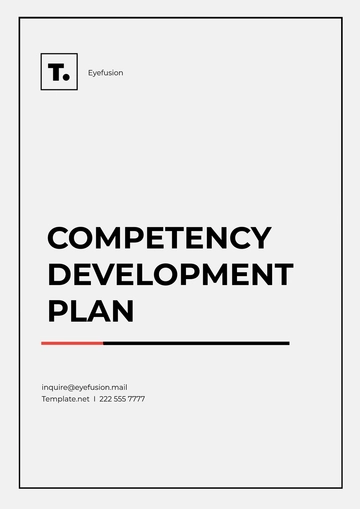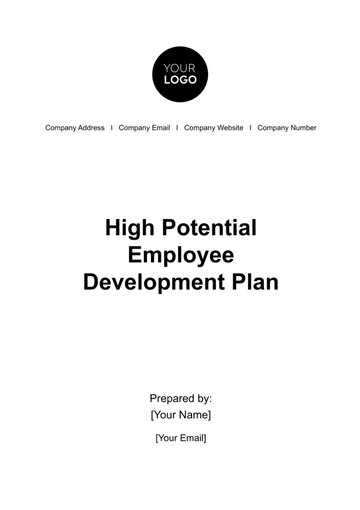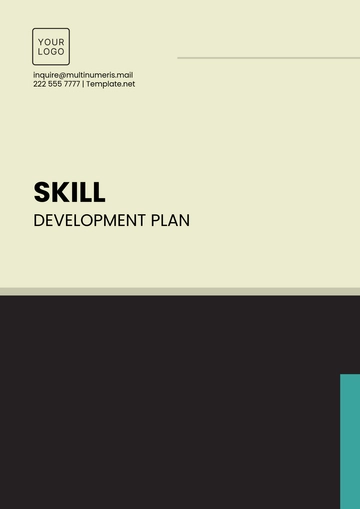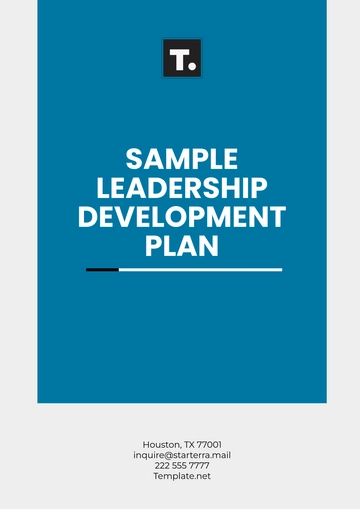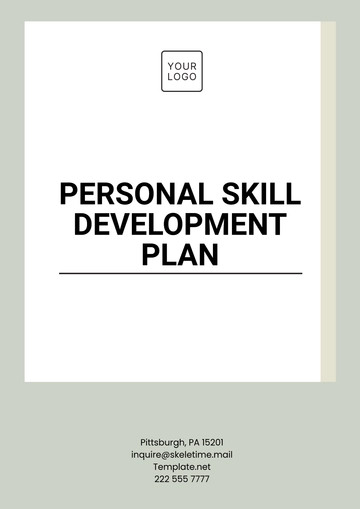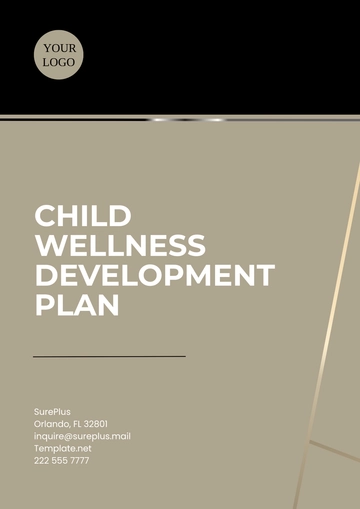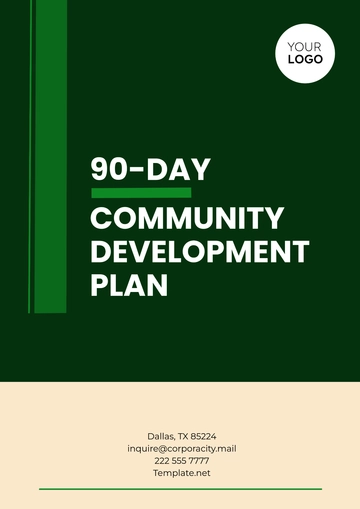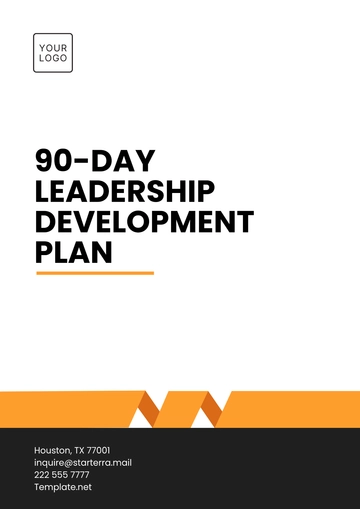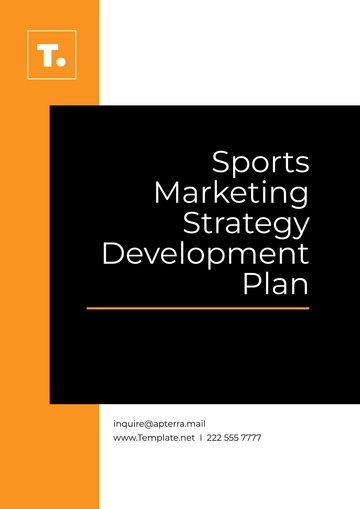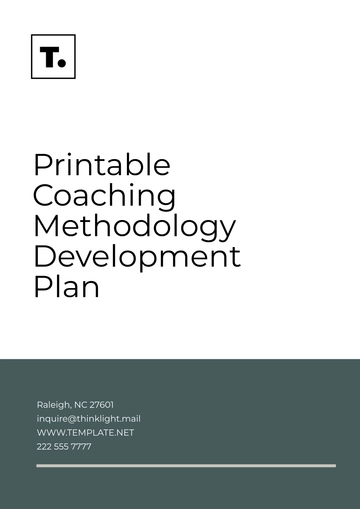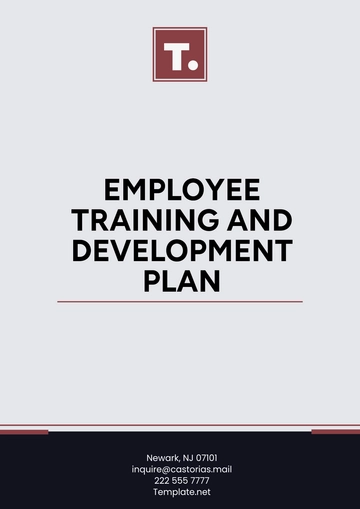Market Development Plan
Written by: [Your Name]
I. Executive Summary
To sustain our growth trajectory, [Your Company Name] recognizes the need for a comprehensive Market Development Plan. This plan aims to strategically expand our market presence starting in 2050 and beyond, ensuring continued innovation and customer-centric solutions.
II. Company Overview
A. Mission Statement
Our mission is to provide cutting-edge and creative solutions that significantly improve and enrich the lives of our customers, as well as our stakeholders, across the globe.
B. Core Values
Integrity: Upholding ethical standards in all business operations.
Innovation: Continuously seeking new ideas and technologies to drive growth.
Excellence: Commitment to delivering high-quality products and services.
Customer Focus: Focusing on customer satisfaction and lasting relationships.
Sustainability: Integrating sustainable practices into our operations and product offerings to minimize environmental impact.
C. Company Details
Aspect | Details |
|---|
Company Name: | [Your Company Name] |
Company Address: | [Your Company Address] |
Social Media: | [Your Company Social Media] |
III. Market Analysis
A. Industry Overview
The global [industry name] industry is projected to reach $10 trillion by 2050, driven by technological advancements, increased consumer spending, and globalization. Key players in the market include SmithBrand, BrandKat, and MultiCorp, with a notable focus on sustainable practices and digital transformation.
B. Target Market
Primary Market: Our primary target market comprises millennials and Gen Z consumers aged 18-35, with a growing demand for eco-friendly and socially responsible products.
Secondary Market: Additionally, we aim to penetrate emerging markets in Asia-Pacific, where rapid urbanization and rising disposable incomes present significant opportunities for growth.
C. Competitive Analysis
SmithBrand: Known for its extensive distribution network and strong brand loyalty programs, with annual revenues exceeding $5 billion.
BrandKat: Leader in innovation, boasting a diverse product portfolio and global presence, but facing scrutiny over ethical sourcing practices.
MultiCorp: Emerging player disrupting the market with innovative business models and personalized customer experiences, backed by venture capital funding of $100 million.
IV. Strategic Objectives
A. Short-Term Objectives (2050-2053)
Achieve a 20% increase in market share within the next three years.
Launch 8 new products/services to meet emerging customer needs.
Expand our presence in 5 new geographic regions through strategic partnerships and marketing campaigns.
B. Long-Term Objectives (2054 and beyond)
Solidify our position as the market leader by capturing 30% of the global market share.
Establish sustainable growth practices to ensure long-term viability and profitability.
Foster innovation through ongoing research and development efforts, aiming to introduce 15 groundbreaking products/services by 2060.
V. Market Development Strategies
A. Market Penetration
Implement targeted promotional campaigns with a budget of $10 million to increase brand awareness and customer acquisition.
Introduce competitive pricing strategies to capture price-sensitive segments of the market.
B. Market Expansion
Allocate $5 million for market research to identify lucrative opportunities in emerging markets.
Form strategic alliances with local partners to facilitate market entry and establish a strong foothold.
C. Product Development
Invest $15 million in R&D to enhance existing products and introduce innovative solutions tailored to evolving customer needs.
Leverage customer feedback and market trends to drive product innovation and differentiation.
D. Diversification
Allocate 25% of our resources, approximately $20 million, to explore adjacent markets and industries.
Assess potential synergies and risks associated with diversification strategies to ensure strategic alignment.
VI. Marketing Plan
A. Promotional Plan
Allocate $8 million, or 20% of the marketing budget, to digital advertising channels targeting key demographics and geographic regions.
Leverage social media platforms to engage with customers and build brand loyalty through interactive campaigns and content.
B. Sales Strategy
Recruit and train 100 new sales representatives, with a tiered incentive structure based on performance metrics.
Implement a CRM software investment of $3 million to streamline sales processes and improve customer relationship management.
C. Partnership and Alliances
Allocate $4 million, or 15% of the budget, to identify potential collaborators, suppliers, and distributors in target markets.
Forge strategic partnerships with complementary businesses to enhance product offerings and reach new customer segments.
VII. Financial Projections
A. Projected Revenue
Year | Projected Revenue (in millions USD) |
|---|
2050 | $150 |
2051 | $180 |
2052 | $210 |
2053 | $240 |
B. Cost Estimates
Expense Category | Amount (in millions USD) |
|---|
Marketing Expenses | $40 |
R&D Expenses | $15 |
Operational Costs | $60 |
C. ROI Analysis
Metric | Value |
|---|
Anticipated ROI | 25% |
Payback Period | 2.5 years |
VIII. Implementation Plan
A. Timeline
Quarter | Activities |
|---|
Q1 2050 | Market research and strategy development |
Q2 2050 | Launch promotional campaigns and sales initiatives |
Q3 2050 | Expand into new geographic markets |
Q4 2050 | Evaluate performance and adjust strategies accordingly |
B. Resource Allocation
Resource Type | Allocation Amount | Description |
|---|
Human Resources | $45 million | $30 million (100 new sales representatives), $15 million (R&D) |
Technological Resources | $3 million | Investment in CRM software for streamlining sales processes |
Financial Resources | $200 million | Total budget allocation for executing the market development plan |
C. Risk Management
Risk | Mitigation Strategy |
|---|
Regulatory Changes | Monitor regulations closely; adapt strategies accordingly |
Economic Downturns | Diversify revenue streams; maintain cash reserve |
Technological Disruptions | Invest in R&D; foster innovation and partnerships |
Supply Chain Disruptions | Diversify suppliers; establish contingency plans |
Competitive Pressures | Regular competitive analysis; differentiate through innovation and quality |
Cybersecurity Threats | Implement robust cybersecurity measures; educate staff |
IX. Monitoring and Evaluation
A. Key Performance Indicators (KPIs)
(KPIs) | Target Value | Measurement Method |
|---|
Market Share Growth | 20% | Quarterly analysis of market share compared to competitors |
Customer Acquisition Cost | $100 per customer | Annual calculation of total marketing expenditure divided by new customers acquired |
Product Development Cycle Time | 12 months | Monthly tracking of time taken from concept to market launch |
Return on Investment (ROI) | 25% | Annual assessment comparing revenue generated from market development activities to total investment |
B. Regular Reviews
Plan Templates @ Template.net

